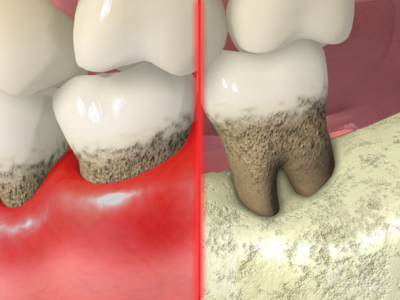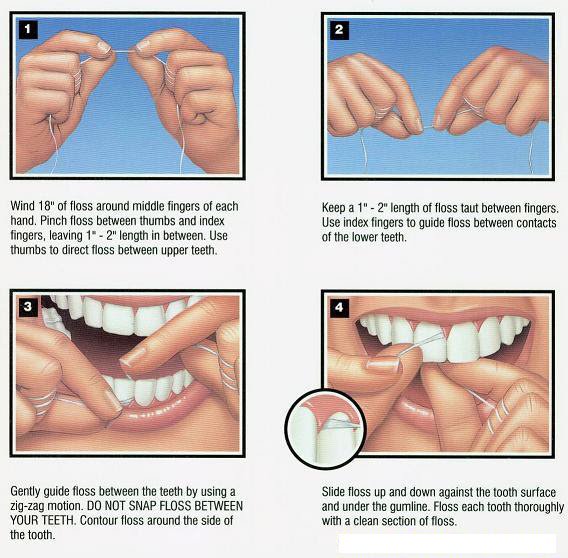

Gum disease, or gingivitis, is inflammation of the tissues surrounding and supporting the teeth and is most commonly a result of poor dental hygiene. Gingivitis is a very common condition and varies widely in severity. It is characterized by red, swollen gums that bleed easily when teeth are brushed or flossed. Gingivitis is not the same thing as periodontitis, although sometimes a person may be affected by both.
While gingivitis is inflammation of the gums around the teeth, periodontal disease occurs when the bone below the gums gets inflamed or infected.

Gingivitis starts as food debris mixes with saliva and bacteria-forming plaque that sticks on the surfaces of teeth. If dental plaque and tartar aren't removed by brushing with toothpaste and flossing, it can become mineralized and form tartar, or calculus. Tartar is very hard and can only be removed by a professional dental cleaning.
Both dental plaque and tartar are filled with harmful bacteria, and if they aren't removed from teeth, they will begin to irritate the gums and cause gingivitis. If left untreated, gingivitis will often extend from the gums to the bone and lead to periodontitis. When the underlying bone gets infected, it will start to recede away from the teeth and form deep gum pockets. These pockets collect plaque and bacteria as they are very difficult to keep clean, and more bone loss occurs. As periodontal disease progresses and more bone tissue is lost, the teeth may eventually become loose and fall out.
Gum disease is mostly caused by improper oral hygiene which allows bacteria in plaque and calculus to remain on the teeth and infect the gums. But there are other factors that increase the risk of developing gingivitis. Some examples are the following:
